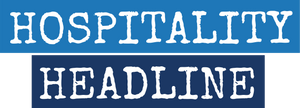I’ve been involved in some aspect of the software industry my entire career. For the first decade, I led product management and development. The second half of my career I’ve spent in marketing and go-to-market. Most of my career has been in the food & beverage, restaurant, and hotel segments.
I’ve been on both sides of B-to-B technology, both a buyer and a seller. Which means I’ve seen things done well - and I’ve seen suck.
If we’re not careful we can treat our precious, hard-won customers to a torture ride. I had many conversations with Kevin Froese at PAR Technology about this connection between hype and reality. He pointed out a correlation I’d like to share.
When you map the Gartner Hype Cycle against Net Promoter Score (NPS) scores across the customer buyer journey for online POS, the curve is remarkably similar. If you were to move the bottom trough of the Gartner curve up to the midpoint, you would have a close match. Check it out.

The NPS roller coaster for new restaurant technology deployment. I've been a multi-time CMO at large restaurant tech companies and the below was seen at all of them.

What is Net Promoter Score® (NPS®)?
Net Promoter Score, or NPS, measures how willing someone is to stake their personal reputation with friends/family (consumer products) or colleagues (business products) by recommending products or services. It is a score that ranges from +100 to -100. Everyone’s goal should be to stay “positive” although many companies have negative NPS scores (think telecom).
If you were to follow the POS buyer journey through marketing and sales, you’d get a very good picture of what the POS buyer experiences. Let’s track a few example points.
The salesperson meets with a prospect and paints the vision of what the product can do. They set high expectations for thrilling ROI and exhilarating results. They make claims and promises, and more claims. The buyer’s heartbeat and breathing quicken. Eyes grow wide. The heart skips a beat as they approach the summit. NPS peaks at the moment the deal is signed. The buyer has bought into the vision. As they top the pinnacle of the coaster, they see nothing but blue sky.
Then reality hits, and the gut-wrenching plummet starts because deploying any technology is painful - even more so if the software is business-critical like POS or back office. Satisfaction drops from a positive to a negative score as the customer discovers feature deficits and other product (and provider) shortcomings. It can look and sound something like this:
“Oh, I didn’t know it doesn't … [fill in the blank]. I thought it would [fill in the blank]. With this new tech, I thought it would be faster to …[fill in the blank]. It doesn’t integrate with [fill in the blank], so my kitchen staff (or general managers or servers) are now less efficient.”
Besides feature deficits, the customer may experience delays due to a missed deployment milestone. Or maybe a hardware incompatibility issue rears its head.
Once the software is deployed, though, a turnaround can begin and NPS tends to improve. People learn, use, and maybe even like the product. They overcome their reticence to change and experience some of the promised value propositions first-hand. Satisfaction creeps upward.
There are no exceptions to this wild ride of a customer journey although some tech providers have advantages.
Larger, more mature companies have ironed out a lot of the things that create issues and disappointments so the fall into disillusionment may not be as steep or rapid. Big companies tend to have a resource advantage. They can throw people at technical problems, much to the CFO’s CAC chagrin. Some software adopters are cheerleaders and evangelists of innovation, so they might be more willing to serve as beta testers or early adopters and therefore have more tolerance for the slide in satisfaction. They may show more patience for feature deficits and bumps along the way, and their NPS score may not swing as wildly.
Can Software Makers Flatten - Or Cushion - the Fall into Disillusionment? How?
Before you face the precipice of another steep drop in customer NPS, discover what you can do. Let me make this plain. You won’t avoid the drop in satisfaction, but you may be able to ‘flatten the fall’ or turn a crash into a soft landing following these tips:
- Don’t over-commit during the sales cycle. And never reward liars on your sales team. Claw back sales bonuses for clients that don’t onboard, and fire liars. If the liar is your CEO, I don’t know what to tell you.
- It seems obvious, but create products that work. If your product is causing customer pain, remove the pain and avoid releasing features that cause more pain. At a tech startup, I was both the CTO and the operations VP. I made sure the software worked or I was shooting my own foot. Figure out how to share that pain. Pain helps people focus.
- Set appropriate customer expectations. Put those in writing and repeat the send/receive cycles.
- Meet your commitments. That means be careful of the commitments you make.
- Over communicate with customers. Make them tired of hearing from you.
- Have solid processes for client onboarding that are well-documented and implemented.
- Create and communicate success criteria and metrics to your teams. People care more about what is measured and kept score on.
- Have a plan for when customers don’t follow through because most don’t. And if you want to avoid finger-pointing later, document key milestones and ‘misses’ (including customer failure to follow through) along the way. You’re not going to throw this in your customer’s face but it’ll help you maintain your sanity.
- Develop robust user education and training in a variety of formats to accommodate different learning styles (written, video, audio, online tutorial). Evaluate whether your training is optimized for short attention spans and late hour access.
- Allow for internal responsiveness and tiered support through install/setup/deployment. You don’t want people sitting around waiting for a response. No one likes waiting in traffic.
- Your responsibility as a software provider does not end at implementation. Keep on investing in the relationship. Have a regular meeting cadence with clients post install. Hopefully you have Pendo or other tools to monitor access, use and metrics. Provide key info in your meetings and look for the strategic value add.
Flattening the fall in NPS has the potential to more quickly turn your customers into fans who refer and recommend you sooner and more often. Maybe they’ll even get on the roller coaster ride again when they switch positions into a new brand. But is it worth the effort? That’s for you to decide.
In my next article, I’ll discuss the fine line between doom and success in the restaurant software market, and a key thing that software companies don’t do enough of to ensure success.
Onward!

